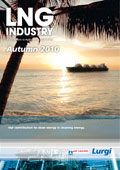Editorial comment
It seems as though everyone is talking about unconventional gas. But could it really be the world’s next major energy resource? Utilising expertise honed in the US shale gas bonanza, Halliburton recently performed Poland’s first ever shale hydraulic fracturing operation, kick starting the quest to tap into between 1.5 – 3 trillion m3 of shale gas, (as estimated by US consultancies). Although highly speculative as a reserve estimate, the development of this gas could go a long way in reducing Poland’s dependency on Russian gas.
Register for free »
Get started now for absolutely FREE, no credit card required.
There is reason to believe that the exploitation of unconventional gas in China is also on the verge of taking off, albeit on a more gradual scale than we have witnessed in the USA. To date, only a relatively small amount of coal seam gas has been produced from the country’s considerable reserves. Recently, the US government has offered technical advice on developing shale gas assets in China. And the Americans certainly know how to handle their shale. As a result of embracing and successfully exploiting its shale gas, the USA has grown to rival Russia in terms of recoverable gas reserves, and essentially has more gas on its hands than it has had in decades. As a solution to this happy dilemma, Cheniere has just received approval from the US Department of Energy to convert its Sabine Pass LNG receiving and regasification terminal into a liquefaction and export terminal. The large unconventional gas fields in Texas and Louisiana have been the driving force behind this conversion, which marks the creation of new markets and promotes global investment into the US gas market.
However, it’s clear that a global move towards more advanced ways of recovering unconventional gas, along with better understanding of the shale gas geology and possible environmental repercussions of hydraulic fracturing are needed in order to stimulate investment into this growing sector in other parts of the world.
One company that has recently taken its first plunge into unconventional gas investment is Total, buying a 20% stake in Australia’s Gladstone LNG project, which aims to convert coal seam gas into LNG to supply Asian markets. With US$ 4.2 billion being committed to making Queensland the world’s first CSG-to-LNG base load export facility, it’s apparent that this seemingly novel application is being taken very seriously by a number of established LNG players.
It looks as though unconventional gas will soon be well placed to compete with conventional gas, having already staked its place as a long term hot topic in the global gas industry.

